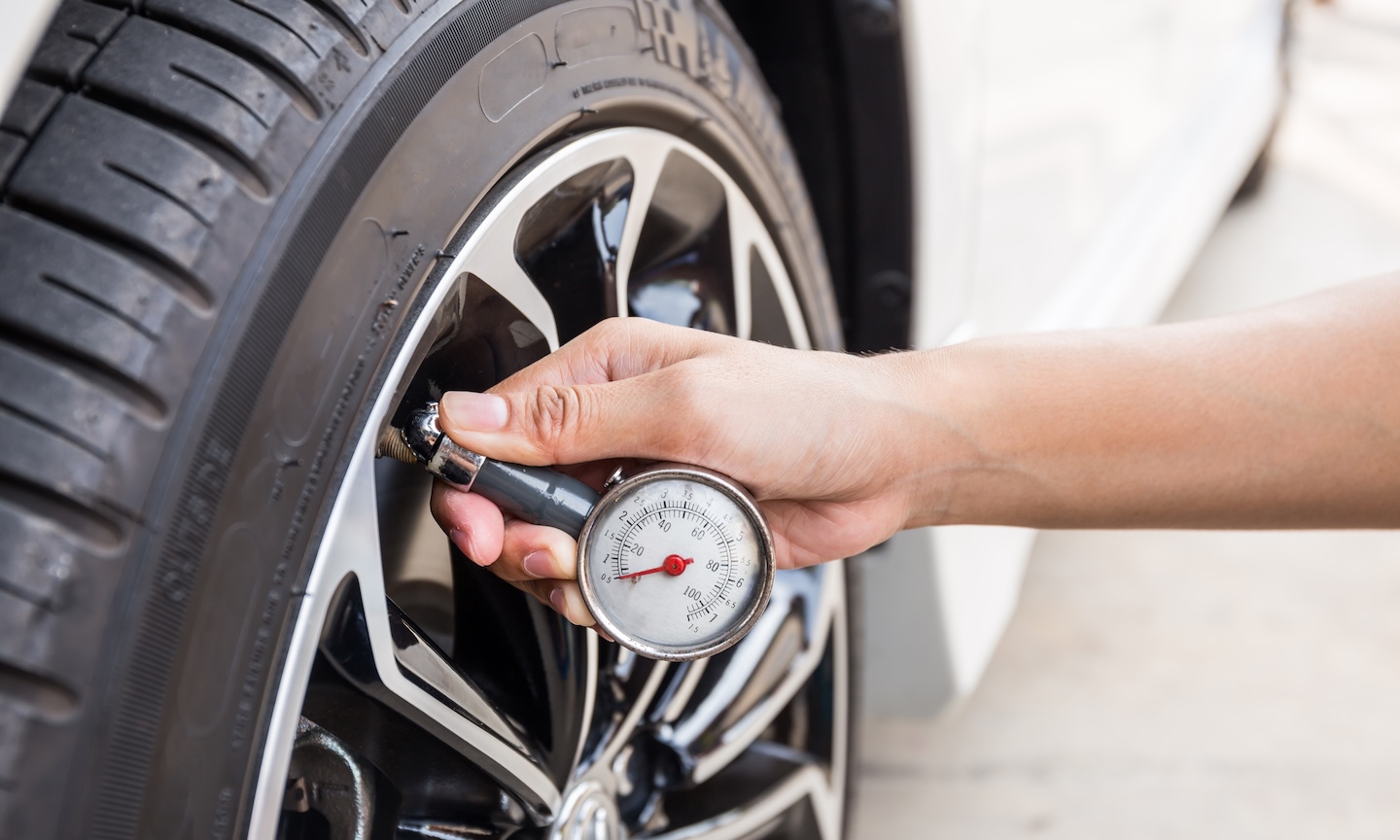How to Check Your Tires Before You Drive

Low pressure can not only shorten a tire's lifespan but can also be dangerous. Underinflation is the leading cause of tire blowouts. That's why it's important to check your tires at least once a month, and before you go on long road trips as well.
How Much Pressure Do Your Tires Need?
While tires have a PSI number listed on the sidewall, it's important to understand that this is the maximum amount of air pressure the tire should have. To find the recommended tire pressure, refer to your vehicle's user manual or check the sticker on the inside jam of the driver's side door.
Even if your vehicle has a tire pressure monitoring system (TPMS), you should still check your pressure manually. Tire pressure monitoring systems only alert you when tire pressure drops significantly, but smaller drops below the recommended amount can still cause wear and tear and decrease fuel efficiency.
Choosing a Tire Pressure Gauge
First things first, you'll need a gauge to measure your tire pressure if you don't have one. Digital gauges are easier to read and tend to be more accurate. On the other hand, analog gauges don't need batteries to operate and are generally more durable.
If you have an air compressor, you can buy an attachment with a built-in pressure gauge. This will allow you to pump up the tire and observe the measurement at the same time.
Measuring Your Tire Pressure
Because air expands in tires while driving, they should only be measured when cold. Ensure that your vehicle hasn't been driven for at least 3 hours before following these measurement steps:
- Find the valve stem and remove its tire cap.
- Insert the gauge firmly and evenly onto the valve stem.
- Note the tire pressure on the gauge.
- Repeat to make sure your initial measurement was accurate.
Inflating and Deflating Tires
If your tire pressure is low, you'll need to fill the tire up to the recommended PSI. Overinflated tires can be just as problematic and dangerous as underinflated tires, so stick to the recommended pressure and don't overinflate. If you inflate the tires too much, you can remove air by placing the gauge nozzle on the valve stem and pressing down lightly.
Check the Tire's Condition
After measuring your tire pressure, you should also check the condition of your tire. Your tire tread should be at least 2/32 inches. If the tread depth looks low, take out a penny and place it in between the treads with Lincoln's head facing down. If you can see all of Lincoln's head, the tire needs to be replaced.
Other things to look for on your tire include:
- Uneven wear
- Cracks, cuts, or splits
- Bulges
- Flat spots
Rotate Your Tires Regularly
In addition to checking each tire's condition and pressure levels, you should also have your tires rotated regularly. Rotating your tires will ensure that the tread wears evenly, which can improve performance and extend the life of the tires.
Tires should be rotated about every 5,000 miles. However, this can vary based on road conditions, driving style, drivetrain, and tire type. Check your vehicle manufacturer's recommendations for more specific information about when to rotate your tires.
Whether you need a rotation, new tires, or other vehicle maintenance, don't hesitate to reach out to our service department. Our experienced team is here to fix any issues and keep your vehicle running in peak condition. Contact us online today to schedule your appointment.
